Alexander Hamilton is at home on Broadway, but the man who authored the Federalist Papers and established the US Treasury lived first – and last – in the Garden State. While Lin-Manuel Miranda’s hip-hop musical Hamilton is reviving interest in the “ten-dollar Founding Father,” the Garden State has long been loyal to his memory: four communities, dozens of schools, and at least 100 streets are named for Hamilton.
Hamilton traveled New Jersey widely, from his arrival in the colonies, through Revolutionary battlegrounds, to his fatal duel with Aaron Burr. While wintering in Morristown in 1777, Martha Washington named a favorite tomcat after Hamilton. These 13 Alexander Hamilton sites suggest a man who was, like his namesake, always on the prowl.
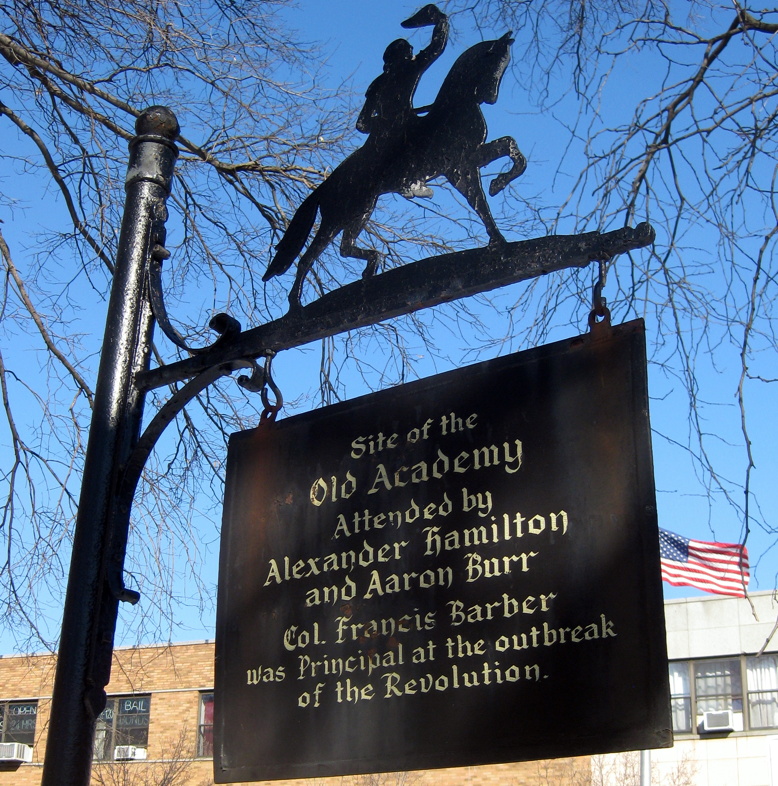
Photo courtesy of Flickr Creative Commons: Wally Gobetz
The Academy at Elizabethtown, Elizabeth
When 15-year-old Alexander Hamilton arrived from the Caribbean to make his way in the colonies, he attended the Academy at Elizabethtown – as Elizabeth was then known – in the winter of 1772 and the spring of 1773. School alumni included Aaron Burr, future Vice President, who later shot Hamilton fatally in a Weehawken duel. Francis Barber, school headmaster, later served under Alexander Hamilton during the Battle of Yorktown.
Liberty Hall, Union
While attending Elizabethtown Academy, Hamilton lodged with William Livingston’s family at Liberty Hall. Livingston, a lawyer, later became a member of the First and Second Continental Congress, a founding father, a signatory of the Constitution, and the first Governor of the State of New Jersey. Now in Union, the property was then part of Elizabethtown. Liberty Hall is a museum on the campus of Kean University.
Crossing the Delaware, Trenton
As captain of the New York Provincial Artillery Company, Hamilton retreated with George Washington’s troops from New York through New Jersey into Pennsylvania in the autumn of 1776. On Christmas night Hamilton crossed the Delaware back into New Jersey to participate in Washington’s successful attack on the Hessians at Trenton (December 26, 1776). Two future Presidents of the United States, James Madison and James Monroe, crossed the river that night, along with John Marshall, a future Chief Justice of the United States Supreme Court, and Aaron Burr. Hamilton’s troops exchanged cannon fire with the enemy, bringing about the Hessian troops’ surrender.
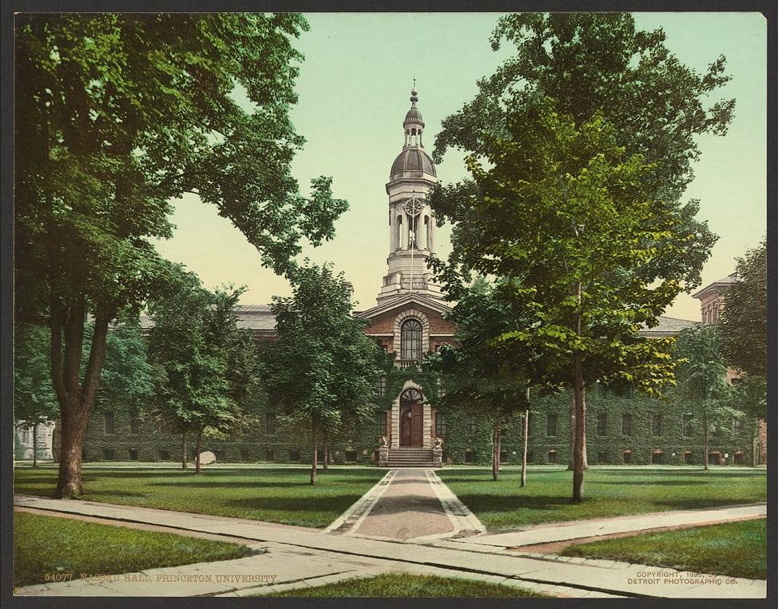
Nassau Hall, Princeton University in 1903. Photo courtesy of Wikimedia Commons.
Nassau Hall, Princeton
When he arrived in the colonies, Hamilton hoped to attend Princeton University, then called The College of New Jersey. Founded and led by Aaron Burr, Sr., father of Aaron Burr, the college declined to admit Hamilton. (He went to Columbia instead.) When Washington’s army — including Hamilton’s artillery — surprised British forces at Princeton (January 3, 1777), legend says Hamilton deliberately fired a cannonball into the college’s main building, Nassau Hall.
Arnold Tavern, Morristown
George Washington headquartered at Arnold Tavern in 1777. During the winter months of the American Revolution, little fighting took place. Instead, both sides strategized. When, on March 1, 1777, Washington announced, “Alexander Hamilton Esquire is appointed Aide-De-Camp to the Commander in Chief; and is to be respected and obeyed as such,” Hamilton moved into the tavern. Hamilton and Washington occupied the second floor of the tavern until they left in May to begin the spring campaign.

Ford Mansion in Morristown. Photo courtesy of Flicker Creative Commons: Shinya Suzuki.
Ford Mansion, Morristown
When the Continental Army returned to Morristown for the 1778-1779 winter, George Washington and his staff – including Alexander Hamilton – stayed at the Ford Mansion. Theodosia Ford allowed Washington to use her home as his headquarters. While Ford and her four children lived in two rooms of the house, General Washington, his wife Martha, five aides-de-camp, eighteen servants, visiting dignitaries and guards took over the rest of the mansion.
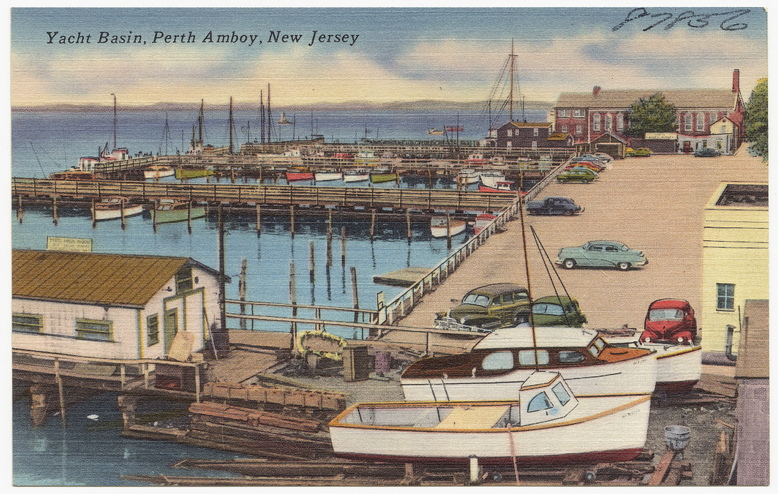
Photo courtesy of Flickr Creative Commons: Boston Public Library.
Perth Amboy
Hamilton and fellow commissioner Robert Hanson Harrison negotiated prisoner exchanges with the British in “Amboy,” which they declared neutral ground. When negotiations ended in December, 1778, Hamilton reported to Washington, who was at Wallace House.

Wallace House in Somerville. Photo courtesy of Wikimedia Commons.
Wallace House, Somerville
Hamilton stayed at the Wallace House while the house served as Washington’s official headquarters from December 1778, to June 1779. The Wallace family rented four rooms to Washington, his wife Martha, and their large group of military and personal assistants. From the Wallace House, Hamilton wrote to John Jay, the President of Congress. He asked Congress to recommend to South Carolina that it support a plan to raise battalions of slaves who would fight in the war in return for their freedom. Hamilton wrote, “the dictates of humanity and true policy equally interest me in favour of this unfortunate class of men.”
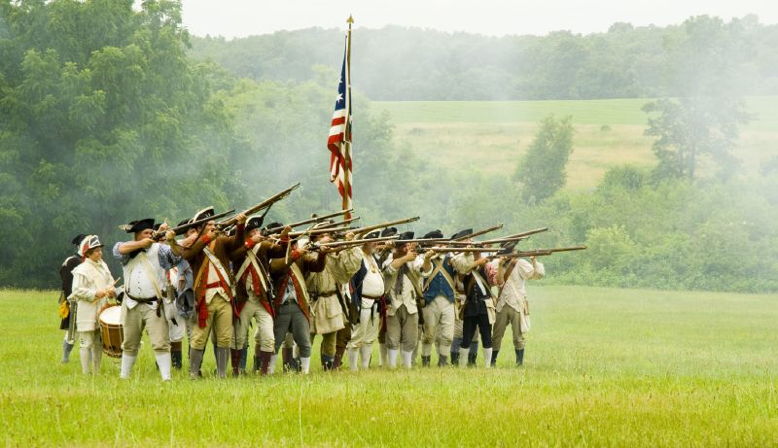
A reenactment of the Battle of Monmouth at Monmouth Battlefield State Park. Photo courtesy of Flickr Creative Commons: zhengxu.
Monmouth County
During the Battle of Monmouth (June 28, 1778), the Continental Army attacked the British as they left Monmouth Court House (now Freehold). Though his horse was shot out from under him during the battle, Hamilton rallied the American troops. After seeing him in action, Washington promoted Hamilton to lieutenant colonel and transferred him to his staff permanently as aide-de-camp.
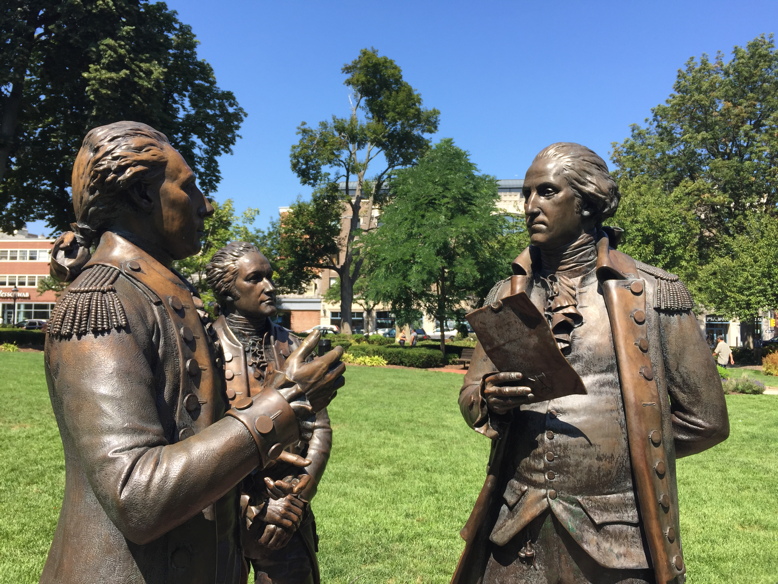
A statue on the Morristown Green commemorates a meeting between George Washington, Alexander Hamilton and the Marquis de Lafayette. Photo by Maryrose Mullen.
Morristown Green, Morristown
A sculpture of Hamilton, Washington and the Marquis de Lafayette stands on Morristown Green, part of Morristown National Historical Park, where the Continental Army camped in 1779 and 1780. During the winter months, when plans were laid for battle, Hamilton served as translator between Washington and Lafayette.
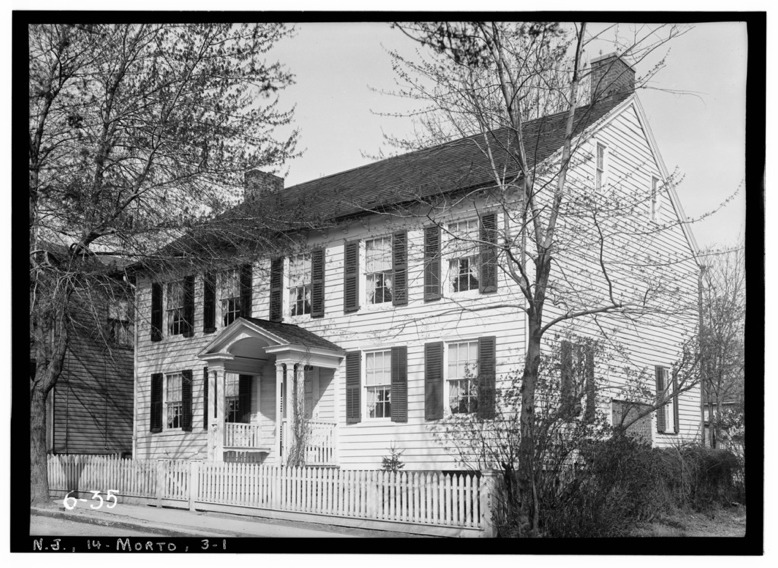
The Schuyler-Hamilton House, 1936. Photo courtesy of Wikimedia Commons.
Schuyler-Hamilton House, Morristown
Hamilton asked friend John Laurens to find him a wife who “must be young, handsome (I lay most stress upon a good shape) sensible (a little learning will do), well bred (but she must have an aversion to the word ton) chaste and tender (I am an enthusiast in my notions of fidelity and fondness) of some good nature, a great deal of generosity (she must neither love money nor scolding, for I dislike equally a termagent and an œconomist).” When he met Eliza Schuyler, and courted her in Morristown, she fit the bill. The couple married on December 14, 1780.
The Great Falls, Paterson
Hamilton first saw the Great Falls during the Revolutionary War on July 10, 1778, while picnicking with George Washington and the Marquis de Lafayette. Today a statue of Hamilton looks out over the falls, reportedly marking the picnic spot.
As Washington’s Secretary of the Treasury, Alexander Hamilton established Paterson in 1791 as the first planned industrial city in the new nation. Hamilton organized the Society for the Establishing of Useful Manufactures (S.U.M.), intended to free the United States from reliance on Britain’s manufactured goods. Hamilton raised private funds for the S.U.M. to purchase land at the Great Falls on the Passaic River in Paterson and established an incubator of manufacturing start-ups powered by the Great Falls.
Hamilton’s vision became reality in the following century. Known as “Silk City,” Paterson became the largest manufacturer of silk goods in the world during the 19th century. More than a hundred factories were located in Paterson, producing cotton, flax, and paper. Paterson also produced the first Colt firearms, the first motorized submarine, the engine for Lindbergh’s Spirit of St. Louis, both locomotives used in the Civil War’s Great Locomotive Chase, and hundreds of locomotives used to build the Panama Canal.
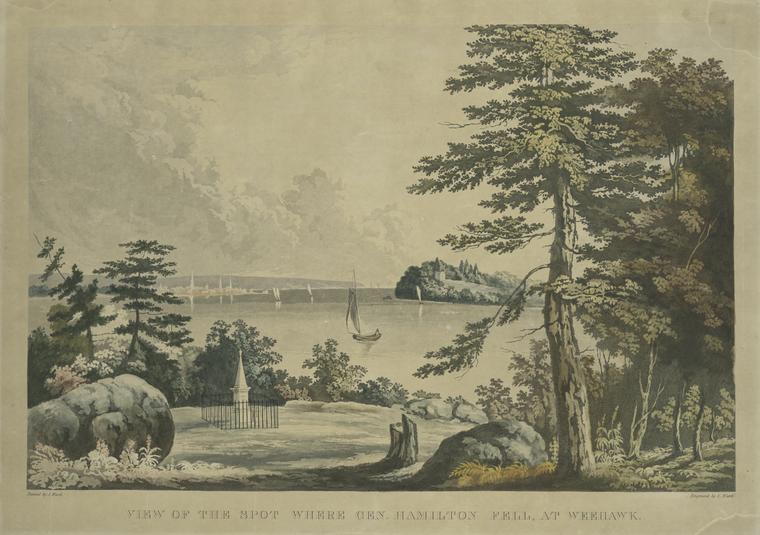
View of the Weekhawken dueling grounds in 1830s. Photo courtesy of the New York Public Library.
Weehawken Dueling Grounds
The Weehawken dueling grounds was home to numerous affairs of honor. In 1801, Hamilton’s 19-year-old son Philip dueled with George Eacker after Eacker made a derogatory speech about Alexander Hamilton. Philip Hamilton was shot and died the next day.
Three years later, Hamilton and Burr met at the Weehawken dueling grounds to settle decades of grudges.. Burr shot Hamilton in the torso. Fatally wounded, Hamilton was carried back across the Hudson to the home of his close friend William Bayard. He died on July 12, 1804.





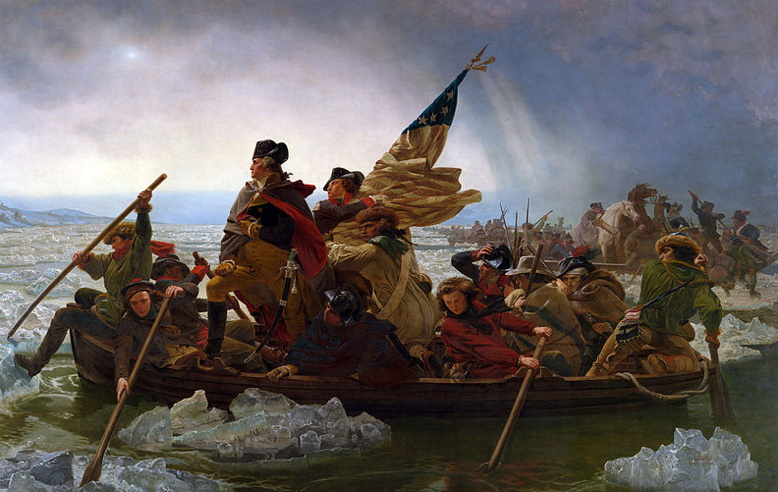
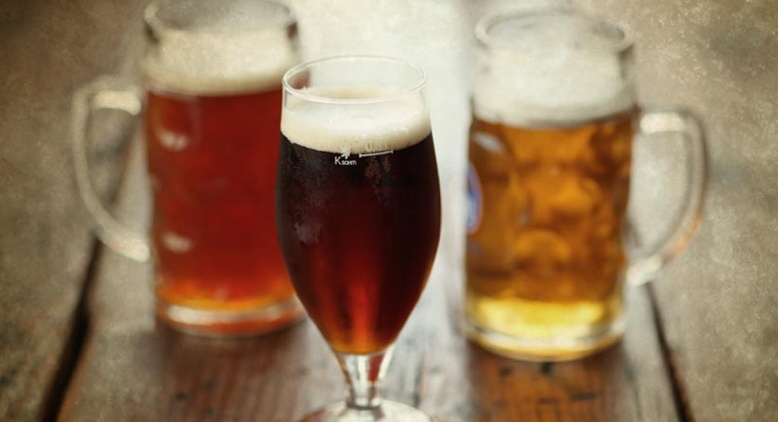
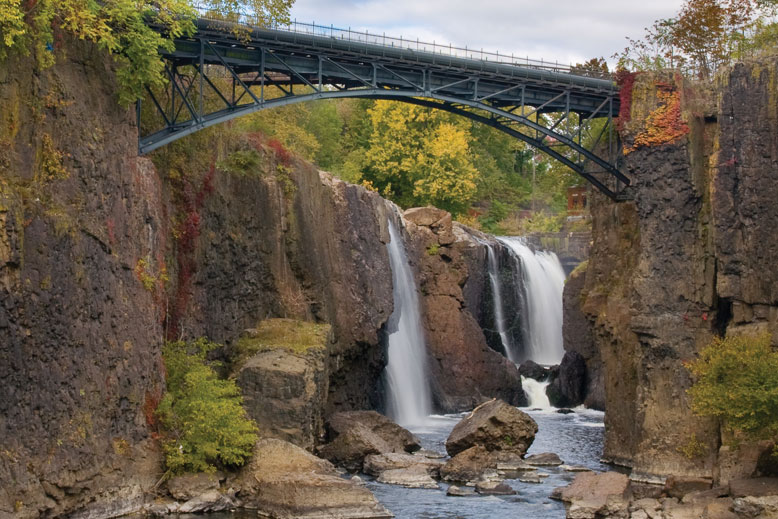
You missed including the Steuben House at Historic New Bridge Landing in River Edge. Hamilton wrote a letter in 1780 from New Bridge during the Steenrapie Encampment. The emotional letter (NY Public Library digital collections), transcription and context is on the Bergen County Historical Society’s website. http://www.bergencountyhistory.org/Pages/HamiltonLetterFromNewBridge.html